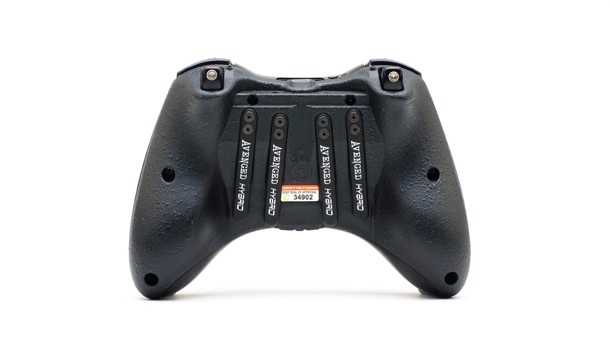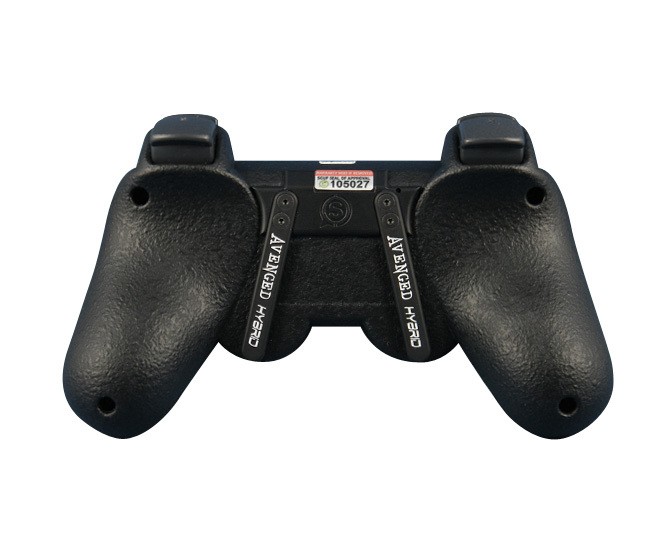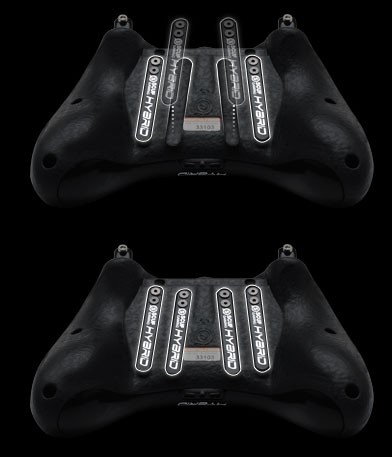Scuf Gaming Is Building A Better Controller With The One You Already Have

Controller technology has come a long way since its humble beginnings as a pair of Pong paddles. Atari gave us the joystick-and-button, and Nintendo added precision to the mix with a directional pad and second button.
Since then, ergonomics and functionality have increased giving us the Xbox 360 controller and Dual Shock 3 (not to mention the new devices coming with next-generation consoles). One company is improving on design and comfort by re-engineering Microsoft and Sony’s creations.
There are a number of third-party controller manufacturers with products on the market, but Scuf Gaming founders Duncan Ironmonger and Simon Burgess have chosen a different path. Rather than invest in manufacturing costs, they opened their business in 2011, after inventing the SCUF controller in 2010, to build a better mousetrap by re-engineering the ones that already exist.
“If you look at the Xbox controller, I give them credit,” Ironmonger says. “Microsoft did a wonderful job in creating a really ergonomic, well put-together, reliable controller. I don’t think anyone would argue that. What we’ve done is re-engineer the way you use that controller with the paddles on the back.”
Scuf used the Xbox 360 and PlayStation 3 controllers as a beginning, but what comes out the other side of the process is completely different. On the backside of every Scuf controller are two or four paddles. These can be remapped to any one of 8 functions on the controller with the push of a button.

These aren’t modded cheat controllers with rapid fire or macros. They simply offer additional mechanical options so players can do more with their hands without moving off the thumbsticks or contorting their hands into uncomfortable and unsafe positions (one of which is commonly called “the claw”).
For that reason, Scuf controllers, are approved for competitive use by gaming leagues, including Major League Gaming, and the company claims over 85 percent of the top professional shooter gamers are already using them.
The triggers on Scuf controllers can be adjusted via the included 1.5mm hex key. By tightening them down, users reduce the wasted distance for digital functions (firing or not firing, or shooting from the hip or down the scope).
For Call of Duty and Gears of War gamers, Scuf includes trigger stops. In combination with the hair triggers, these drastically reduce wasted time on the null-space in the trigger pull. By tightening the trigger down in combination with the stops, you can move the trigger very little and quickly aim down the scope or fire and cease moving before you go further than you need.
The most recent models of the controllers have a completely redesigned back and, for wireless versions, a lithium ion battery that is charged via mini-USB rather than a Play and Charge kit. Because of this Scuf has removed the battery pack on the Scuf Hybrid, leaving the rear largely flat except for the paddles, which are easily reachable by middle or ring finger.
“You hold the controller slightly differently than you might otherwise hold the controller,” Ironmonger says. “When you’re holding the traditional controller, you wrap all your fingers around the controller handles and just use your trigger fingers and your thumbs. But, as you use the paddles, you’re effectively using less of your hand to hold the controller because you’re using the finger next to your small finger to activate the paddles. Overall, we required a re-engineering of the back of the controller to include deeper handles so your hands lock in place.”
The re-engineered backs have an optional coat of military-grade textured paint applied. “We’ve got people who are experienced in military-grade materials and specifications that lend themselves very well to durability and the requirements of a controller, “ Ironmonger says. “There’s a five-stage process that goes into making the back of the controller.”

Additionally, Scuf controllers come with options of domed or concave thumbsticks. These are customizable, but Ironmonger recommends the taller domed top for more comfortable, precise movement on the right stick, and a concave head for the left. Rumble packs can be removed to reduce weight, and there are a variety of aesthetic options. The idea is to create a hand-made, hand-tested product that fits gamers’ individual needs.
The custom Scuf controllers aren’t inexpensive. They cost upwards of $85, with many over $120, and that might be out of the price range of the average gamer. There are other options, though. If you send Scuf your existing Xbox 360 or PlayStation 3 controller, they’ll “Scuf it up” for $45 - $50. That includes two paddles on the back and the hair triggers and a “no slow turn” fix (many controllers suffer from this condition that causes a lag when moving in at least one direction).
I had the opportunity to test them with and without trigger stops. The adjustable hair triggers make a difference, especially in Call of Duty as I was able to aim down the sights and fire faster. The Scuf grip feels good on the hands, and despite my love for the standard Xbox 360 controller, I was impressed by just how much better the Hybrid (the most current model) feels.
It took a while to break years of habit and make the switch from pressing face buttons to using the rear paddles. In a game like Gears of War though, being able to sprint and keep my thumb on the stick is an enormous improvement by itself. Adding in jumping, crouching, reloading, and weapon switching in Call of Duty creates an entirely different feel. Making the switch to the paddles is a change, but one that is well worth it.

The products are impressive, but so is the story behind Scuf. Ironmonger and Burgess started the company with no venture capital funding. Their operations have grown to include 45 staff members here in the United States and 18 in the UK. Those locations are where every Scuf controller is re-engineered.
The pair have patented both the paddle and adjustable hair trigger with trigger stop technology. The hardware designed goes hand-in-hand with what Ironmonger calls “Scufology.” “The four components of Scufology in gaming are the eye, the brain, the hand, and the controller,” Ironmonger told us. “We try to control two of those elements—the hand and the controller. The hand, because we’re using it in a safer, more ergonomic way, and the controller, because we’re redefining the way the controller is engineered, so you can use more of it.”
Because of the nature of the ordering process, Scuf doesn’t pre-build anything. Each is made to order, and typically takes seven to eleven days to build, finish, and test for standard speed (faster options are available). The company doesn’t advertise traditionally, though it does market to competitive gamers and YouTubers. The controllers aren't currently at retail, though word of mouth through gamers and its own website with pictures and video have been helping the business grow.
Xbox One and PlayStation 4 versions are on the way, and Ironmonger expects we’ll see those during the early Q2 2014. For more information on Scuf, check out the company's website.

Get the Game Informer Print Edition!
Explore your favorite games in premium print format, delivered to your door.
- 10 issues per year
- Only $4.80 per issue
- Full digital magazine archive access
- Since 1991









